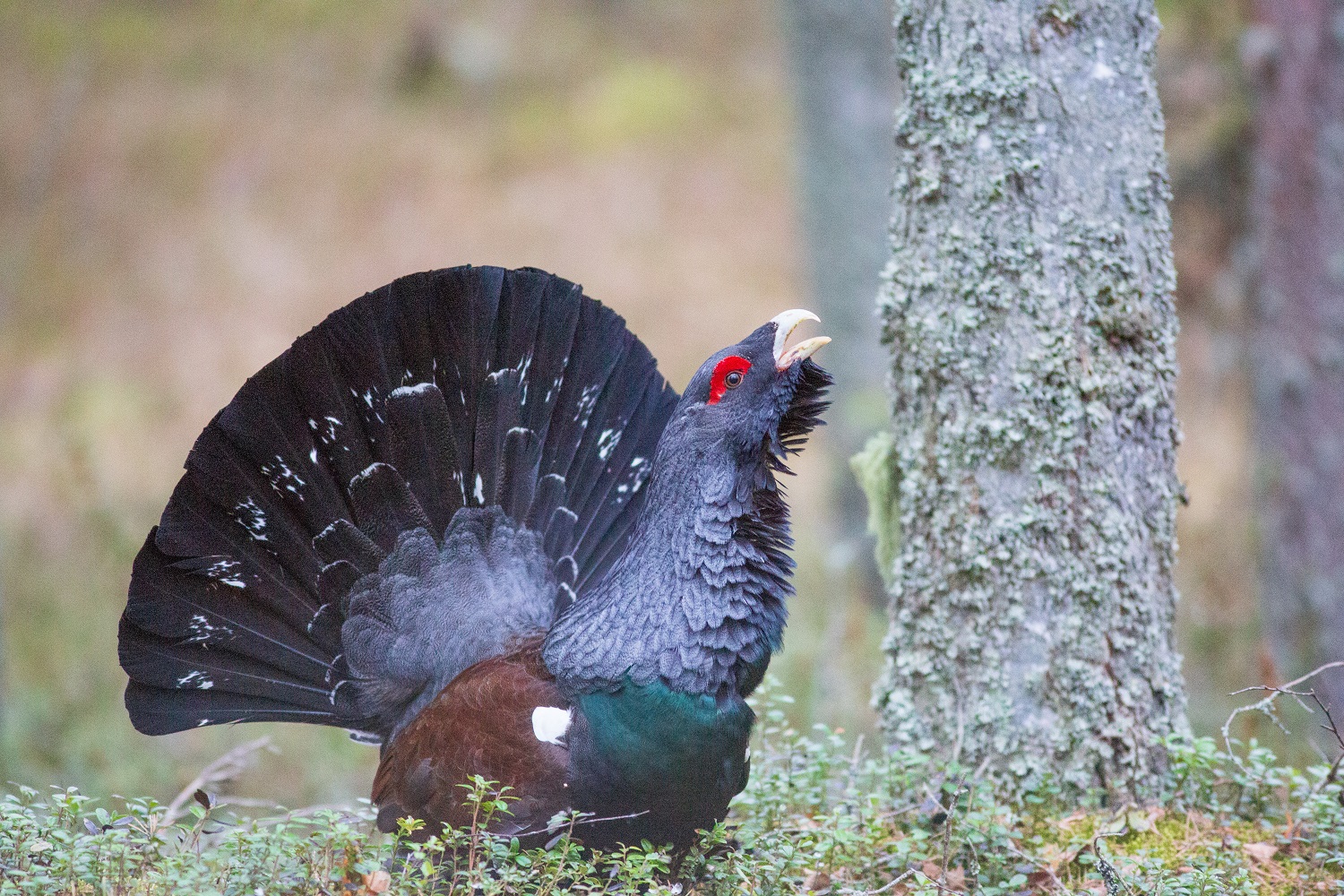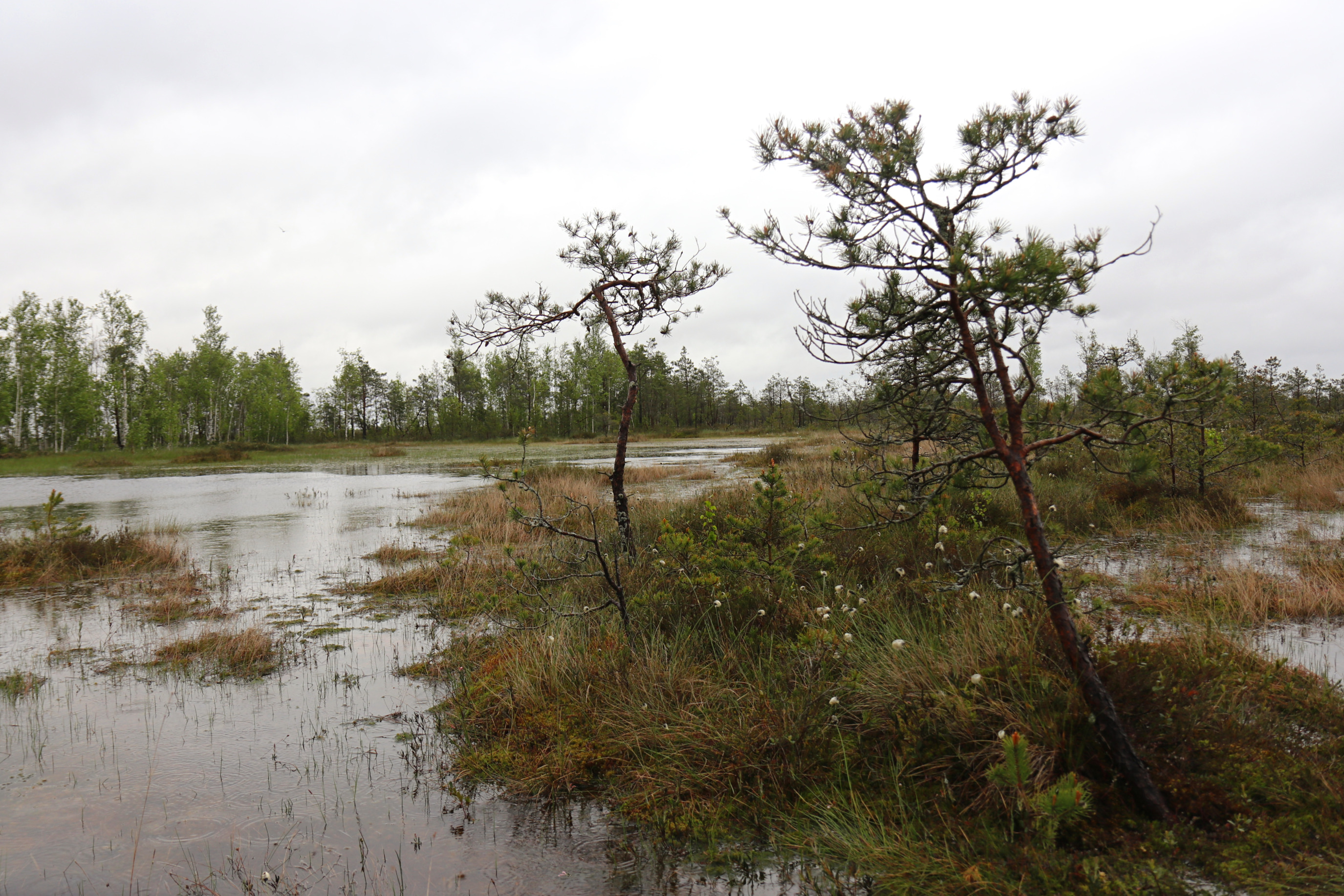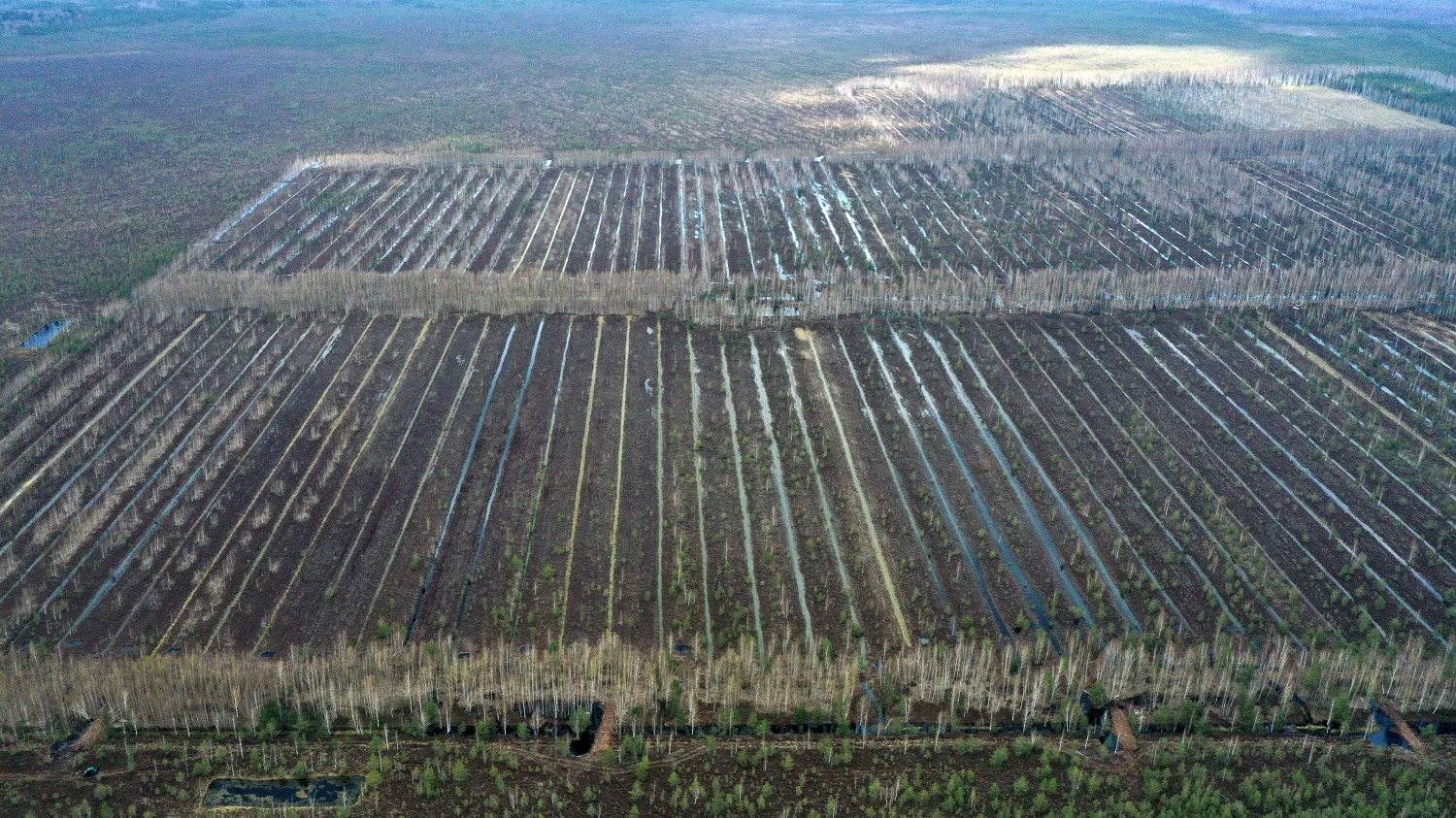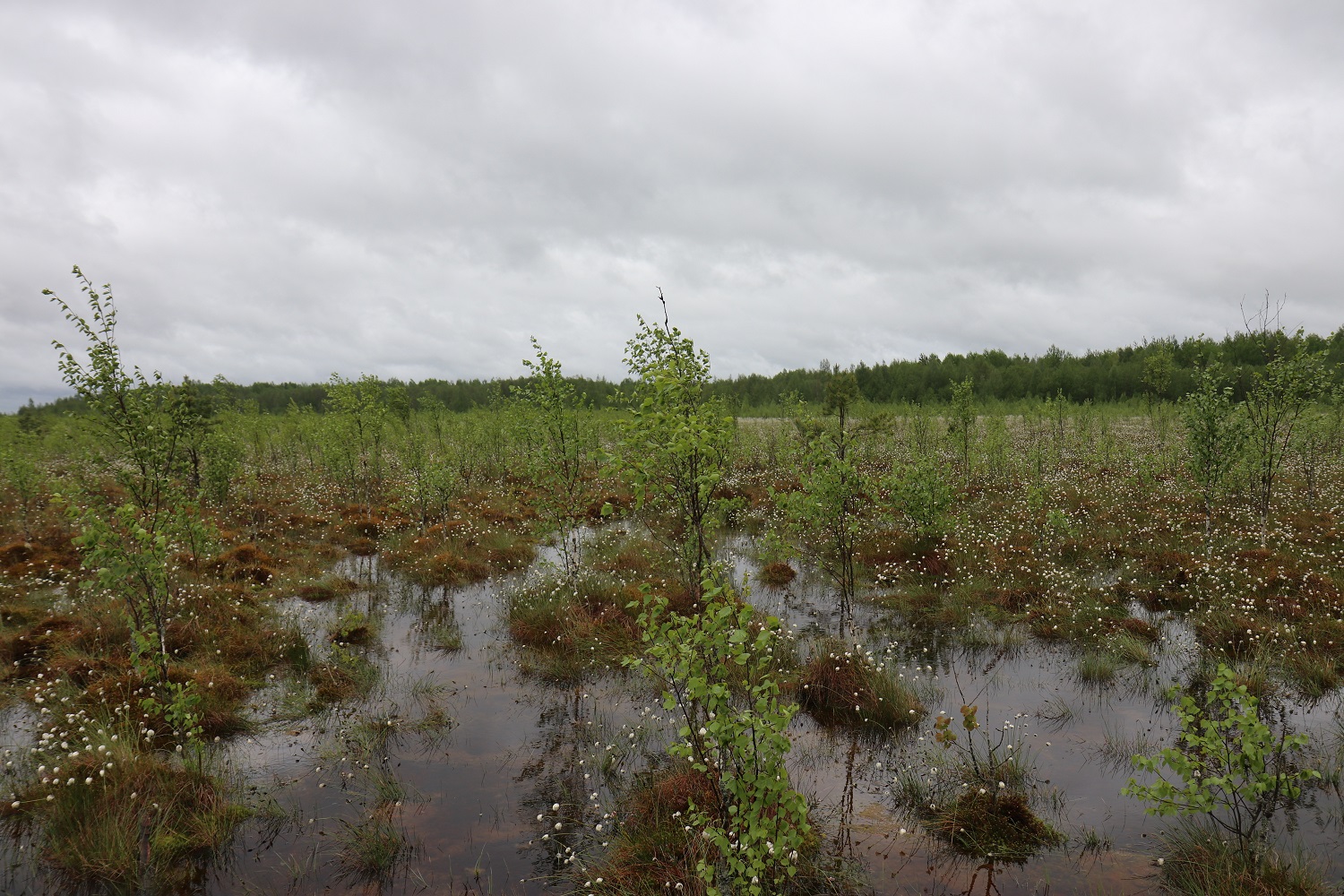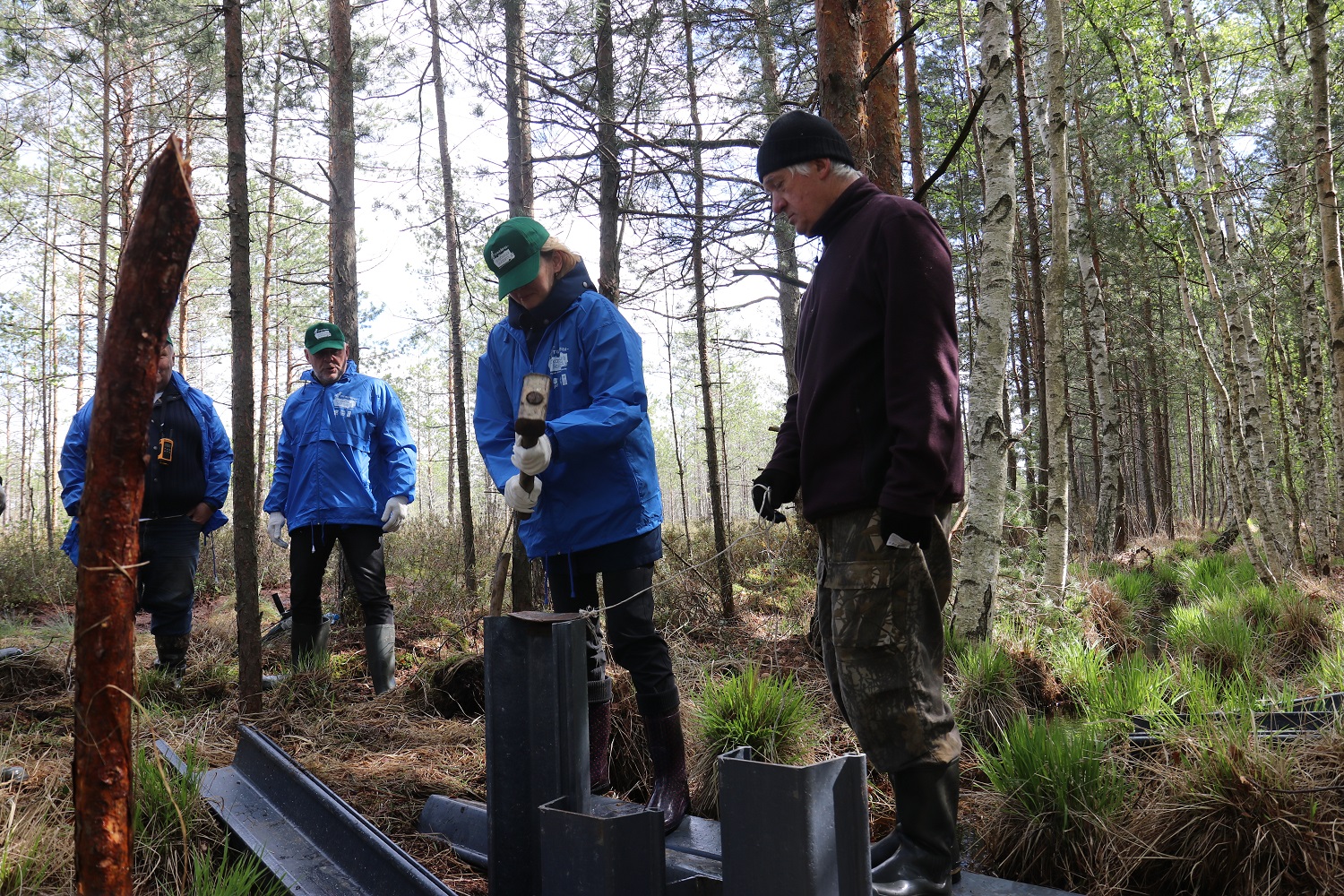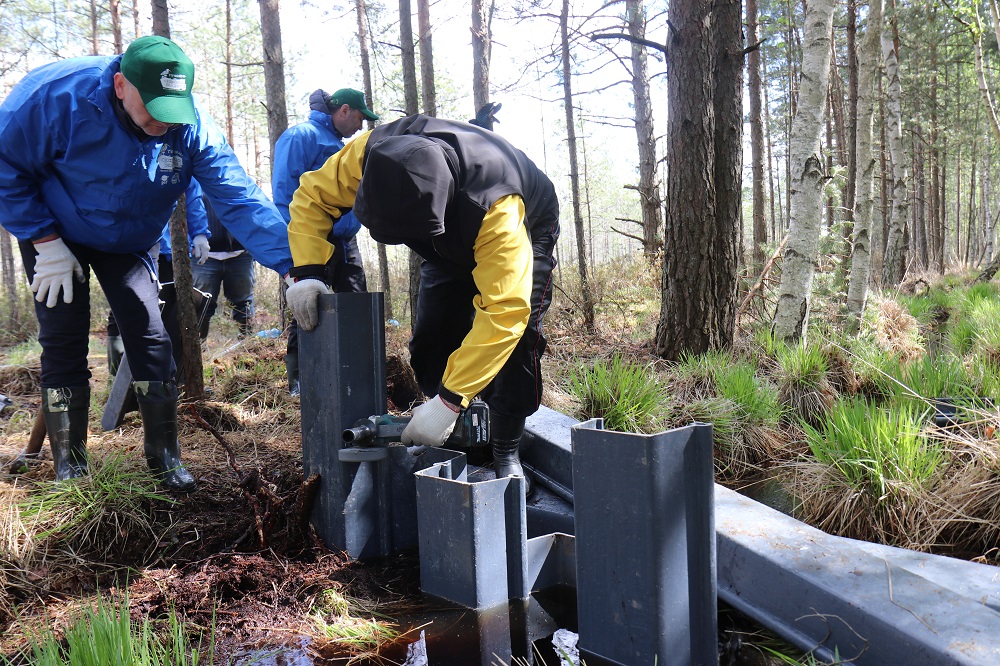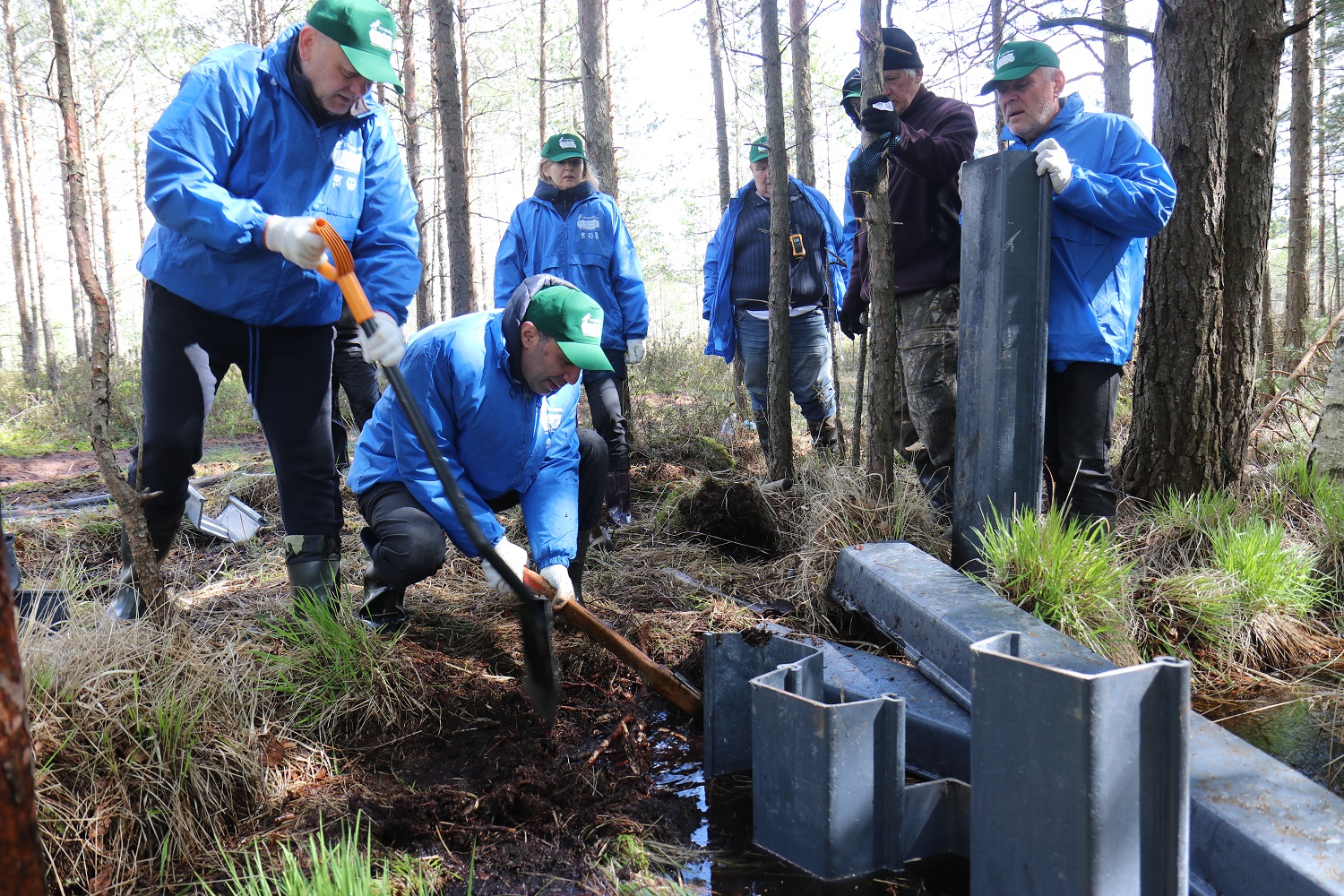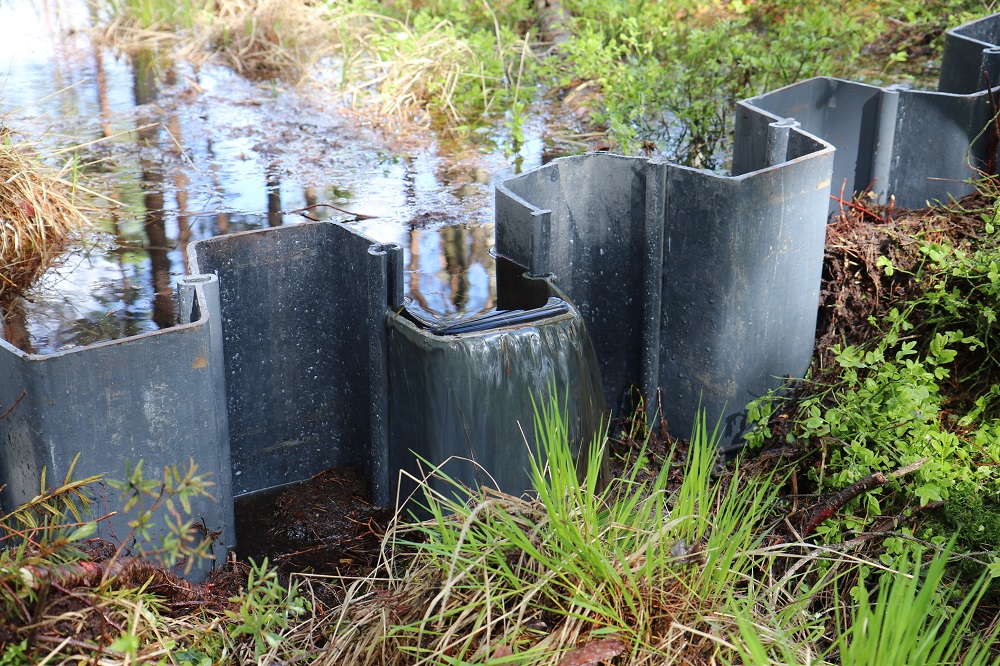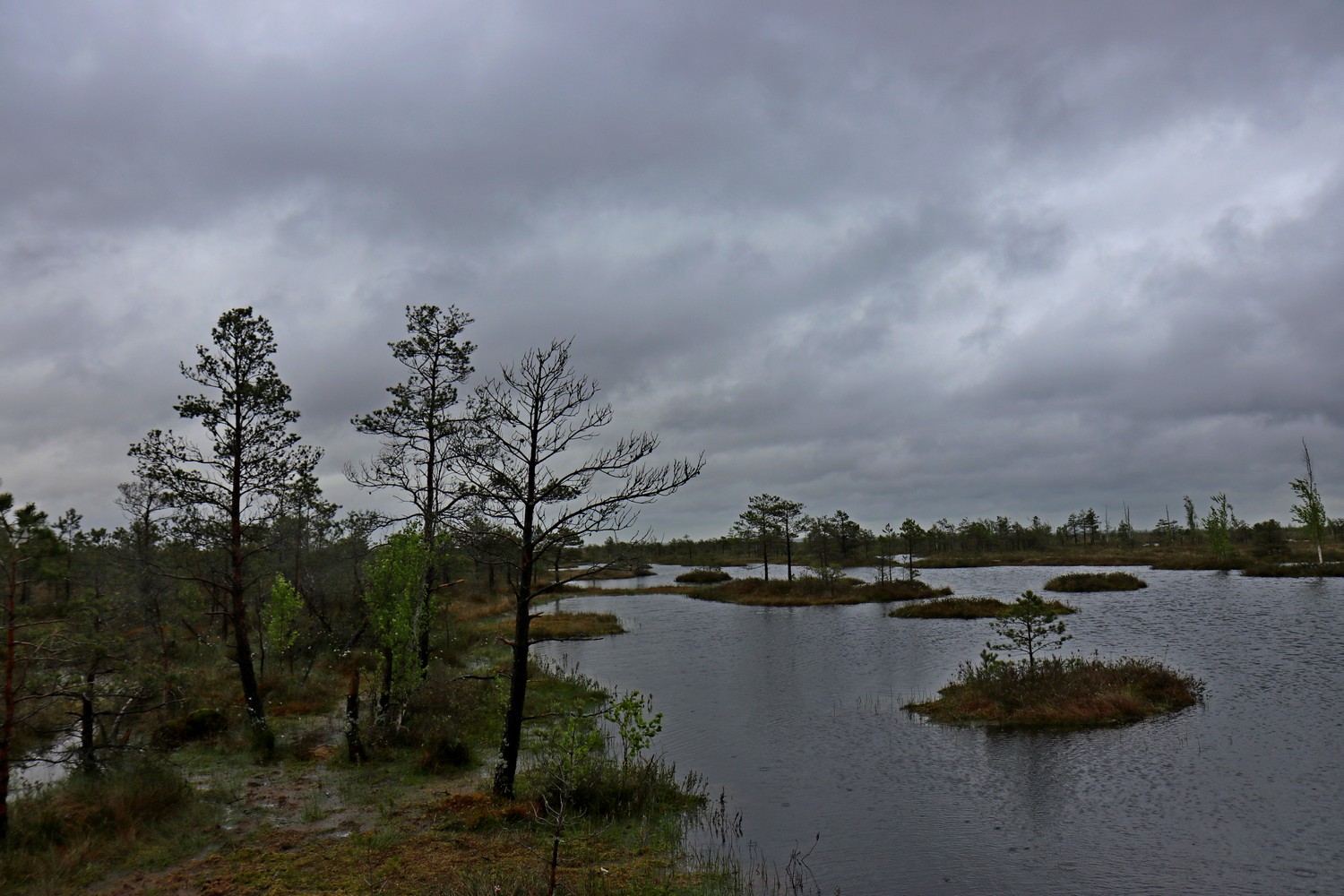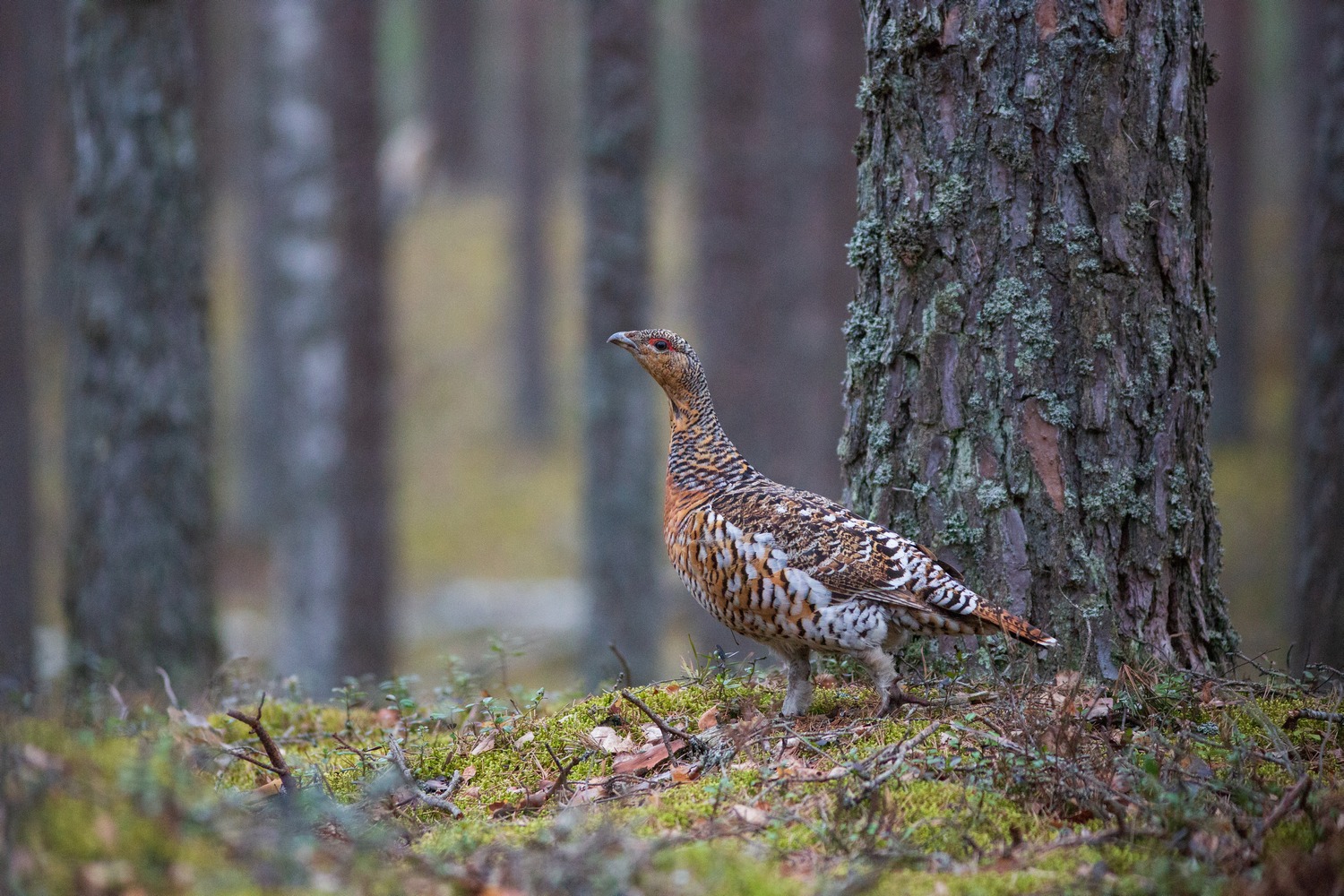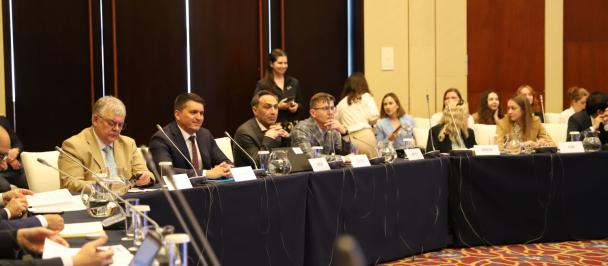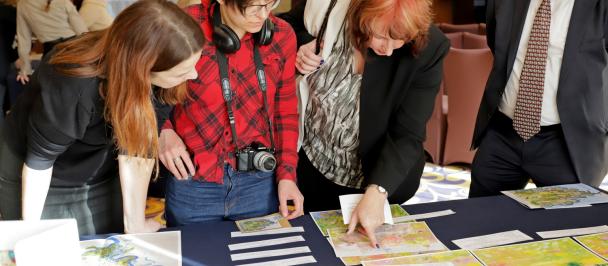Photography: Alexander Kozulin
Peatlands are unique and at the same time least studied ecosystems on the planet. In a natural condition peatlands deliver undeniable benefits for climate, people and nature. Peatlands are leaders among other ecosystems in carbon sequestration. They support unique species of animals, insects and plants, help purify fresh water, have a have a net cooling effect on climate and reduce flood risk. Peatlands also provide a range of ecosystem services. The survival of entire communities of people depends on the well-being of peatlands.
Despite the importance of peatlands for the planet and people, today they are considered as vulnerable and endangered ecosystems. Around 15% of the world's peatlands have been drained and continue to be one of the key causes of climate change, biodiversity loss and deforestation.
Yelniya raised bog complex is a nature pearl in the north of Belarus.
In the beginning of the 20th century peatlands covered 14.2 % of the territory of the modern Belarus. Peat bogs were an integral part of the livelihood of the local population. Bogs were used for hunting, fishing, honey, cranberries and medicinal herbs harvesting. Sedges and reeds were used as fodder for livestock.
High demand for expanding arable and forest lands, as well as commercial interest in peat as a fuel, became the main driving forces behind the large-scale campaign to dry Belarus’ peat bogs out. The damaging of these ecosystems continued till the end of the 20th century and led to the loss of 40% of Belarus wetlands. As the result, large areas of drained peatlands became unprofitable and unsuitable for further use in the economy.
The former peat extraction site in the Zhada peatland in Miorsky district of Viciebsk region.
Today, Belarus owns 2,390,000 ha. of peatlands, but only 4% of them are preserved in their natural state. The presence, and in the long-term increase of the territory of disturbed peatlands causes considerable damage to the environment and the economy.
Drained peatlands often succumb to fire. Putting out the peat fires consumes huge amounts of resources. Experts estimated that the cost of putting out fire on one ha. of peatland costs more than US$ 3,000,000. Considering the climate change and increasing frequency of hot and dry days, the presence of about 500 thousand ha. of dried peatlands in Belarus may result in sever peat fires with dire consequences for people and the environment, like the ones that swept through the central regions of Russia in the summer of 2010.
Disturbed peatlands stop absorbing carbon and abundantly release their thousands of years carbon storage back into the atmosphere. The disturbed peatlands supply 5% of all global greenhouse gas emissions.
In a situation like this, the rewetting can be seen as one of the most feasible, and sometimes the only way to prevent disturbed peatlands from further degradation and to launch restoration process.
UNDP team in Belarus takes part in the construction of cascade dams to block the drainage channel on the Zhada bog. May 2021.
This simple, relatively cheap and effective method is about evenly raising the groundwater level by blocking drainage channels with water-regulating structures: cascade dams, sluices, water level regulators. The cost of rewetting one ha. of disturbed peatland varies from US$ 40 to 100.
"My father worked in the Disna Forestry all his life," says Denis Leonovich, the Director of the Disna Forestry in Miory district of Belarus. My childhood memories keep the smell of smoke from my father when he was returning home after fighting forest fires. Peat bogs and forests burned frequently. My father was constantly advocating the purchase of a special fire-fighting equipment for the Forestry. After the rewetting of the disturbed Zhada peat bog, which is located on the territory of the Disna Forestry, the peat fires stopped. I once went with my father to pick mushrooms in the forest adjacent to the peat bog, and when he saw how much wetter the peat soil had become, he said: "Now I see that we don't need any special firefighting equipment anymore.”
The rewetting of disturbed peatlands consists of several stages: design of a scientific rationale, site selection approval, construction project development, environmental assessment and finally construction works.
The Institutes of the National Academy of Sciences of Belarus in cooperation with the United Nations Development Programme, the Ministries of Forestry, Natural Resources and Environment Protection and with the support of the Global Environment Facility (GEF) developed a regulatory framework and established the methodological basis for ecological rehabilitation of damaged peatlands. These documents helped to create a solid regulatory framework for land users on the restoration and further sustainable use of disturbed peatlands.
Today, scientific, design and construction organisations have accumulated good amount of practical knowledge on peatlands rewetting and restoration. Thanks to their efforts, 20 disturbed peatlands with a total area of more than 60,000 ha were returned to natural or near-natural state. The restored area makes 15% of all disturbed and inefficiently used peatlands in the country. The total amount of international technical assistance invested in peatland restoration and conservation is more than four million USD.
“Restoring degraded peatlands through rewetting is simple, efficient and accessible nature-based solution,” says Alexandra Solovieva, UNDP Resident Representative in Belarus. “Wide and scientifically grounded implementation of peatland rewetting practices helps Belarus achieve NDC commitments under the Paris Agreement and stop biodiversity loss, share knowledge across green recovery policy areas in the region.”
Belarusian bogs are home to more than 40% of the bird species, 35% of the insect species and more than 15% of the wild plant species, listed in the Red Book of Belarus. This also includes numerous species of migratory birds, for which the bogs are critical transit areas on their migration routes.
A drop in the water table by 0.5-0.7 meters impacts peatland biodiversity. As the result, many iconic marsh species, such as the swift and the marsh turtle, are now on the verge of extinction. For example, due to draining fen mires the number of globally threatened aquatic warbler in Belarus decreased by 40% in just 10 years.
Photography: Alexander Kozulin.
Scientists noted that almost immediately after the water level rises, several waterfowl species, such as black-tailed godwit, northern lapwing, common redshank, common snipe and sterna birds return to the open peatlands. While marshy areas overgrown with reeds experience increase in populations of common crane, spotted crake, great white heron, bittern, sedge warbler, common reed bunting. Restored peatlands also become attractive for big animals like elk, wild boar, roe deer.
According to recent observations, made by the scientists, only six species of waterfowl can be found on the disturbed peatland, while more than 16 species can be observed on the restored one. A successful example of restored peatland’s impact on biodiversity is the case of Svyatoe peat bog in Hrodna region where a large colony of wetland bird species arrived immediately after the rewetting. Today, the peatland is a popular site for birdwatches for berm-watchers, as well as an important monitoring point for the scientists studying the processes of biodiversity recovery on disturbed peat bogs.
Monitoring of post-rewetting peatlands recovery is continuing. As of now, it is still difficult to assess the full extent of the impact of rewetting on the recovery of peatland wildlife species - large-scale peatland restoration is only just gaining momentum in Belarus. But even today we can say that there are positive dynamics, which means that in the near future there is a good chance that the damaged peatlands of Belarus will be alive again.

 Locations
Locations